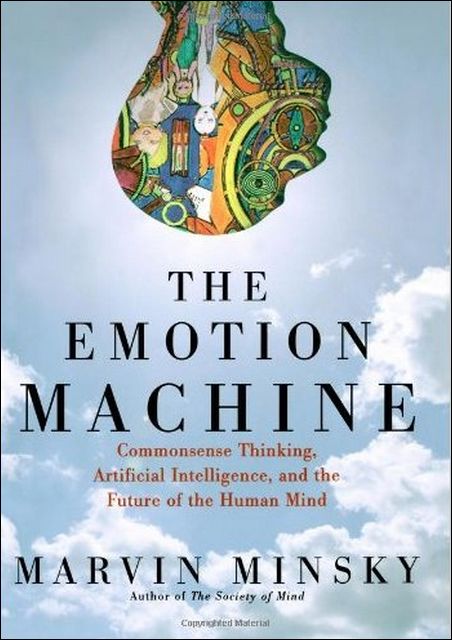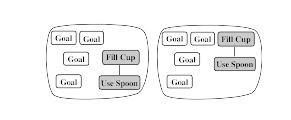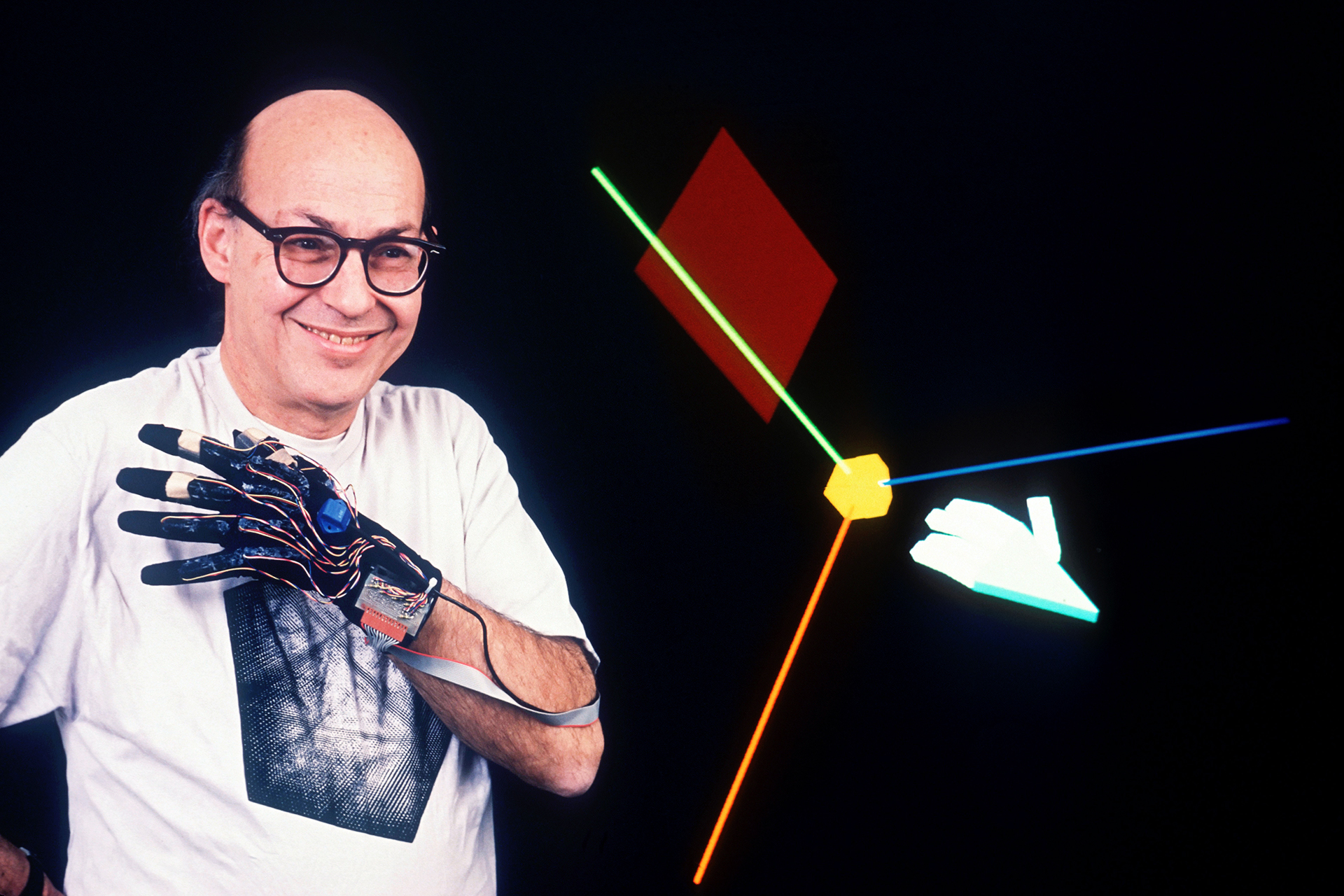Marvin Minsky "The Emotion Machine": Chapter 2 "Impressors"

§ 2-3 Imprimers
“Now, shame is a mental measure of shame, in which we shrink from the awareness of shame, and not from the consequences of actions, and we can only guess what opinion is being made about us, it follows that the people before whom we feel shame are whose opinion matters to us. These people are: those we admire; those who admire us; those whose delight we desire; those with whom we confront; and those whose opinions we respect. ”Our language has a huge amount of words to describe our emotional state. When we described playing Carol with mud, we already had to use a whole dozen: attraction, confusion, anxiety, self-confidence, disappointment, anxiety, frustration, fear, addiction, pleasure, pride, satisfaction, shame and sadness.
- Aristotle in Rhetoric 2.6
Why do we have such states at all, and why are there so many of these states? Why did Carol feel grateful and proud when she received praise from her mother? And why is this all, somehow, elevates goals, making them more desirable?
')
Student: You have already begun to discuss that she should have something like “connecting elements” that make her react in a similar specific way - just like Aristotle said, because of her mother’s anxiety. But this does not explain in any way why praise alone cannot make the goal desirable, and it depends on, um ... I can’t think of the right word to describe it - “the person to whom it is attached”?
Psychologists often use the word “caregiver” to describe “the person to whom the child is attached”. They cannot say 'parent', or 'mother' or 'father' because someone else can play this role — for example, a grandfather and grandmother, a nurse, or a family friend.
However, the “guardian” is not a necessary word because (as we shall see in §2-7) such connections can form without physical contact. In any case, it seems rather strange that our language does not have a special word for describing this most important interaction between people! So below, I will introduce two new terms: they will both be based on the old word, 'imprinting', which has long been used by psychologists to describe the process in which young animals learn to adopt the habits of their parents.
Imprimer: The imprinter is one of the people the child is tied to.
Impriming: a specific way of learning new values, which only works when there is a imprinter.
Of course, staying close to the parents helps the offspring to remain safe, but in humans, it seems to have a different effect; when we are close to the person to whom we are attached - those we can call our own 'Imprints' - we find that our thinking has changed in a certain way. Carol's concern for her cup full of dirt might have begun as a usual desire to play with things at hand, and was only an exciting attention to activity. But when she received approval from one of her Imprints, she felt a special surge of pride, which increases her current goal to a higher priority - and in the future she will find that such a goal for her has become more respectable.
We constantly set goals for ourselves, but we always end up throwing at them. Why is it sometimes incredibly difficult for us to continue working on what we were going to work with? In § 9-2 we will return to the discussion of self-discipline and self-control, and here we will only mention that these links can also help us continue to make our intended goal - either because of the hope that we will satisfy our imprints, or because of the fear of disappointing them.
Why does the Imprinter praise have an effect very different from a stranger's praise? I don’t know of any brain research that could uncover the mechanisms involved in this system, but you can quite easily trace the logic of the evolution of such a mechanism: if a stranger is able to change your primary goals, they will be able to make you do whatever they want, what do you want to do!
Children, having no protection from this world would have a much smaller chance of survival, so evolution will select children who can resist this effect.
Student: I love the idea that attachments encourage our children to embrace our values (although you may have prompted me to agree with you using your Imprinter role)
As far as I know, it has not yet been proven that some part of our brain is involved in this activity, but in § 2-7 some evidence will be discussed that the destruction of the attachment of a child may impair its development. Future advances in brain scanning methods should tell us more about how these mechanisms work.
Student: Even if we knew more about how attachments affect us, we still need an explanation of the strength of the feeling of pride and shame.The final chapter of this book will offer some thoughts on what feelings are and how they work.
§ 2-4 Applied learning reinforces goals
“Each of us has beliefs about proper forms of behavior, thoughts and feelings. We acquire our standards, rules, and goals through acculturation ... and each of us has acquired a set characteristic of our particular environment. To become a member of any group, we are obliged to study this group. Life, based on our internal sets of standards, or the inability to live on them - forms the basis of some very complex emotions ”- Michael Lewis in [Shame, The Exposed Self, 1991, Free Press, New York.]
When Carol's loved ones condemn her, she feels that her goals are unworthy of embodiment or that they themselves are not worthy of their goals. And when she becomes older, then even when her Imprints are very far away from her, Carol may still wonder how they can feel: Will they approve of what I did? Will they approve of what I think now? What mechanisms may be involved in experiencing such sensations? Let's listen again to Michael Lewis:
“The so-called emotions of self-awareness, such as guilt, pride, shame and arrogance, require a fairly high level of intellectual development. In order to feel their individual must have an idea of themselves, as well as a set of standards. They should also have an idea of what constitutes success or failure, and the ability to evaluate their own behavior. ”Why does the growth of these personal values depend on the attachment of the child? One can easily see why this could have developed: a child who, having lost his parents' rating system, is unlikely to survive. In addition, parents themselves want to receive the respect of their friends and peers, so they want their children to behave in a socially acceptable way, and we have seen several ways for children to explore these behaviors:
- Negative experience: When the method used fails, the person learns not to use this sub-goal.
- Positive experience: When the method used is successful, the person learns to use this sub-goal.
- Antipathy: When a person is scolded by a stranger, a person learns to avoid such situations.
- Fastening censorship: When a puncher scolds a person, the person reduces the value of his goal.
- Anchoring praise: When a puncher extols a person, the person enhances the value of his goal.
We have already seen how subgoals can be connected to serving our goal — a way that says Use Spoon can be associated with Filling a Mug. But when your puncher extols you, some kind of machinery magnifies your current goal, making it more worthy, by increasing its place in your cloud of goals.

However, this picture doesn’t tell us anything about how these processes actually work, so we need to create some theories about how relationships work to “raise” goals. First, it should depend on the schemes that recognize when praise comes from the imprinter:

Student: Why do you insist that the use of the element "And" requires the presence and praise and imprint?One of the peculiarities of the difference between people is that we can study the same things in different ways, and any psychological event can have several consequences. If attachment-based learning exists, it is only one part of the overall picture.
Student: But this scheme is missing something, because even after the goal level is raised, the “Fill the Cup” goal will still float without any associations that could trigger it.
In fact, this idea is not yet complete. It makes no sense to learn something new until a person is able to extract this knowledge when they are relevant. This concept raises many questions, for example:
- What exactly can each new goal become attached to?
- When and how should they occur?
- What type of priority should they have?
- How long to maintain this knowledge, before getting rid of them?
There are no easy answers to these questions, because all these reasons must involve most of our mental machinery. Nevertheless, it is difficult to understand how to think about such things without a set of ideas about the “levels” of mental activity. Our brains have many systems that can be learned - and how these systems have evolved over the years, they can tend to form rigid hierarchical structures, because each piece of new knowledge gained is built on things we have learned before.
For example, during daily thinking, you need to constantly monitor the “level of detail” of descriptions. When the plan seems to work well, you want to “dive” into the details, but when you feel stuck, you want to “look” at the situation from a height, instead of investing time on subgoals, which may be irrelevant. [See §§ Levels-Links (Level-Bands)]
For the translation, thanks to Stanislav Sukhanitsky, who responded to my call in the “previous chapter.” Who wants to help with the translation - write in a personal or mail magisterludi2016@yandex.ru
By the way, we launched the translation of another cool book - “The Dream Machine: The History of Computer Revolution” .
Table of Contents of The Emotion Machine
Introduction
Chapter 4. CONSCIOUSNESS
Chapter 5. LEVELS OF MENTAL ACTIVITIES
Chapter 6. COMMON SENSE
Chapter 7. Thinking.
Chapter 8. Resourcefulness.
Chapter 9. The Self.
Chapter 1. Falling in Love
Love
The Sea Of Mental Mysteries
Moods and Emotions
Infant emotions
Seeing a Mind as a Cloud of Resources
Adult Emotions
Emotion cascades
Questions
The Sea Of Mental Mysteries
Moods and Emotions
Infant emotions
Seeing a Mind as a Cloud of Resources
Adult Emotions
Emotion cascades
Questions
Chapter 2. ATTACHMENTS AND GOALS
Chapter 3. FROM PAIN TO SUFFERINGPlaying with mud
Attachments and Goals
Imprimers
Attachment-Learning Elevates Goals
Learning and pleasure
Conscience, Values and Self-Ideals
Attachments of Infants and Animals
Who are our Imprimers?
Self-Models and Self-Consistency
Public imprimers
Attachments and Goals
Imprimers
Attachment-Learning Elevates Goals
Learning and pleasure
Conscience, Values and Self-Ideals
Attachments of Infants and Animals
Who are our Imprimers?
Self-Models and Self-Consistency
Public imprimers
Chapter 4. CONSCIOUSNESS
Chapter 5. LEVELS OF MENTAL ACTIVITIES
Chapter 6. COMMON SENSE
Chapter 7. Thinking.
Chapter 8. Resourcefulness.
Chapter 9. The Self.
about the author

Marvin Lee Minsky (Eng. Marvin Lee Minsky; August 9, 1927 - January 24, 2016) - American scientist in the field of artificial intelligence, co-founder of the Laboratory of Artificial Intelligence at the Massachusetts Institute of Technology. [ Wikipedia ]
Interesting Facts:
- Minsky was a friend of critic Harold Bloom from Yale University (Yale University), who spoke of him as “sinister Marvin Minsky”.
- Isaac Asimov described Minsky as one of two people who are smarter than himself; the second, in his opinion, was Karl Sagan.
- Marvin is a robot with artificial intelligence from the cycle of Douglas Adams novels Hitchhiker's Guide to the Galaxy and Hitchhiker's Guide to the Galaxy (film).
- Minsky has a contract to freeze his brain after death in order to be “resurrected” in the future.
- In honor of Minsk named the dog of the protagonist in the movie Tron: Legacy. [ Wikipedia ]
Source: https://habr.com/ru/post/351914/
All Articles